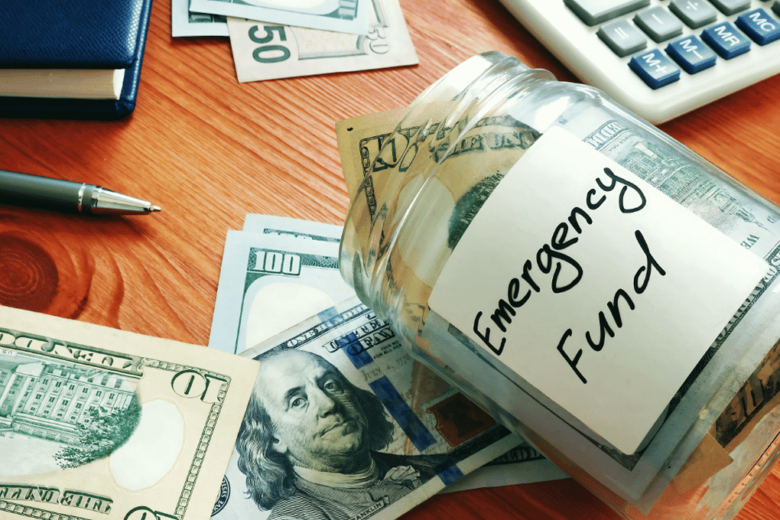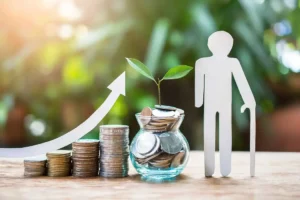In today’s volatile economy, financial stability is no longer a luxury; it’s a necessity. An emergency fund serves as a safety net, protecting us from various risks, including job loss, unexpected medical expenses, urgent home repairs, or a sudden car breakdown. Without this financial safety net, even small problems can escalate into long-term debt and economic instability. We live in an age where anything can go wrong, and relying solely on credit cards or loans can lead to high interest rates and stress.
By creating and maintaining a separate emergency fund, we can gain peace of mind, stay resilient during financial storms, and respond to emergencies without jeopardizing our long-term goals. Building an emergency fund isn’t just about preserving wealth; it’s also about ensuring future stability. The first step toward financial security is understanding its importance.
The True Meaning of an Emergency Fund:
An emergency fund is more than just a savings account; it’s a specific amount of money set aside for emergencies. This money isn’t meant for vacations, shopping, or other planned expenses, like regular savings. It’s meant to prepare us for real crises, such as health problems, job problems, or economic changes. We don’t have to worry about spending this money because we keep it separate from our regular accounts. An emergency fund is like a financial first aid kit that prevents us from prematurely selling investments, taking out loans, or jeopardizing our retirement fund when problems arise.
Why Financial Security Starts With Preparedness:
Financial security isn’t just about your paycheck; it’s about being prepared and staying strong. Life is unpredictable, even when we have seemingly stable jobs and a steady income stream. A sudden illness, a recession, or a global crisis can quickly derail our financial goals. Without a safety net, we have to make decisions with long-term consequences. An emergency fund gives us the ability to prepare for these shocks. It allows us to pay for necessities like housing, food, and healthcare without feeling overwhelmed. It also gives us the confidence to achieve our long-term financial goals without worrying about short-term emergencies.
How an Emergency Fund Improves Your Mental Health:
An emergency fund not only provides financial security but also peace of mind. Constant worry about the unexpected can harm our health, relationships, and overall quality of life. A reliable financial buffer reduces stress and gives us the confidence to face the unknown. When we feel confident that we are financially secure, we sleep better, make better choices, and have more hope about life. An emergency fund gives you an invaluable sense of control. Financial stability creates psychological stability.
How Much Should We Save for Emergencies?
One of the most common questions is, “How much is enough?” Most financial experts recommend saving enough to cover three to six months of basic living expenses. However, this amount varies depending on factors such as family size, job stability, health, and lifestyle. If you have dependents or an unstable income, it’s best to have an emergency fund that can cover up to 12 months of expenses. Finding the right balance between sufficient and accessible is essential. Even one month of savings can make a big difference, and building savings over the long term ensures your financial security.
The Importance of Liquidity in an Emergency Fund:
Liquidity should be the most important element of an emergency fund. Unlike stocks or retirement accounts, you should have quick access to your emergency savings without penalties or waiting periods. By depositing money in a high-yield savings account or a money market account, it remains safe, allowing it to grow slowly and earn interest, while providing immediate access when needed. Liquidity makes savings a viable safety net. Without liquidity, we might have to wait longer to address critical issues, which can exacerbate our financial problems.
How to Avoid Common Mistakes with an Emergency Fund:
Creating an emergency fund is crucial, but it can be ineffective if misused. Common mistakes include keeping money in risky assets, saving it in accounts for everyday expenses, or using it for non-emergencies. Another mistake is failing to deposit the money back into the account after it has been spent. An emergency fund should only be used in a true crisis. We can ensure the effectiveness of our emergency fund by avoiding these mistakes and ensuring it is readily available in any adverse situation.
How an Emergency Fund Supports Long-Term Financial Goals:
An emergency fund isn’t a standalone component of your overall financial strategy; it can actually make it more robust. An emergency fund prevents people from making premature or unnecessary withdrawals from their retirement accounts. It also helps us achieve our long-term financial goals, even when things aren’t going well. This protection is crucial, as unexpected expenses can set back our financial progress for years. That’s why an emergency fund is the most important part of any wealth-building plan. It ensures our financial future is secure, regardless of the challenges we face now.
Building an Emergency Fund Step by Step:
Building an emergency fund can seem daunting, but it becomes easier if we break it down into phases. We start by making a clear plan, for example, how much money we need each month or for six months. Then we set up direct debits or transfers to a special account for automatic savings. Over time, small, regular contributions quickly add up. Cutting back on outside expenses, setting aside bonuses or tax refunds, and prioritizing savings during high-income months can accelerate savings. Think of your emergency fund like your rent or utility bill, which you can’t change; make sure it grows gradually until it reaches your desired amount.
Conclusion:
An emergency fund is more than just a perk; it’s a lifeline to financial stability in this uncertain world. It keeps us out of debt, reduces stress, and helps us achieve our long-term goals. By building and protecting this money, we provide ourselves with the financial security we need to weather life’s inevitable challenges. Saving money alone isn’t enough; you must save with planning, discipline, and foresight. We should consider our emergency fund the foundation of all other financial plans. Without it, our financial framework remains weak. With this fund, we gain confidence, strength, and true financial stability. The sooner we prioritize this fund, the stronger and more independent our financial future will be.
FAQs:
1. How do I know if my emergency fund is full?
Calculate how much money you need each month to live on and save for at least three to six months. Adjust your funds based on your income stability and personal circumstances.
2. Where should I keep my emergency money?
High-yield savings accounts or money market accounts are the best options because they are secure, easily accessible, and offer low interest rates.
3. Can my emergency fund yield a higher return?
No. Emergency savings should be secure and easily accessible. Investing in stocks or long-term investments can cause you to lose money and make it harder to withdraw.
4. How can I access my emergency fund after I’ve used it?
Make building your emergency fund a key financial goal. Start with regular deposits, reduce unnecessary expenses, and use extra income (such as bonuses) to supplement your funds.
5. What if I don’t have an emergency fund?
Without an emergency fund, unexpected expenses can lead to debt, disrupt your savings plan, and result in financial instability for years to come.




